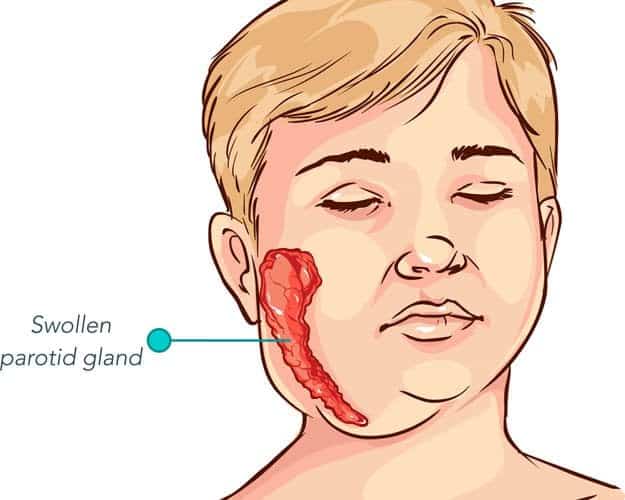Mumps is a viral disease that spread through respiratory droplets, and ultimately results in swelling of salivary glands. It is a contagious illness caused by paramyxovirus, and causes a systemic disease we can prevent through the administration of a vaccine. Most patients with mumps are pediatric, and it is usually seen with higher incidence during spring season.
It takes 2 to 3 weeks’ time for the virus to show its first symptoms, and this is known as incubation period, which typically last for 12 to 25 days. This viral infection spreads through the saliva or urine and we can detect it after the incubation period by looking at different symptoms we will cover through.
Read Also:
- Fibromyalgia Symptoms: 12 Symptoms of Fibromyalgia (Hard to Believe). What are Yours?
- Shoulder Pain: Overview, Causes and Related Diseases, Signs and Symptoms, Diagnosis, and Treatment
- Knee Pain: Causes, Signs, Symptoms, Diagnosis, and Treatment, When To See Your Doctor?
- Low Back Pain: All Things You Want to Know About Low Back Pain Signs, Symptoms, Causes, Diagnosis, and Home Remedies
- Fibromyalgia: What is Fibromyalgia?, Symptoms, Signs, Causes, Diagnosis, and Treatment
- 11 Food Ingredients That Can Cause Inflammation In Your Body To Avoid!
The most important symptoms are as follows:
Salivary Gland Enlargement

Mumps virus has a tropism for the salivary gland. In other words, even though it distributes throughout the body, it will concentrate and mainly affect the salivary glands. Thus, an enlargement of this area is of the utmost importance.
The area over the parotid gland appears swollen, tender to the touch, and associated with facial puffiness. Usually, one parotid gland enlarges before the other, but unilateral and bilateral swelling may appear. Other Salivary glands such as submaxillary and sublingual glands may also be swollen and tender, but these glands are rarely involved. The parotid glands return to normal in a week’s time.
